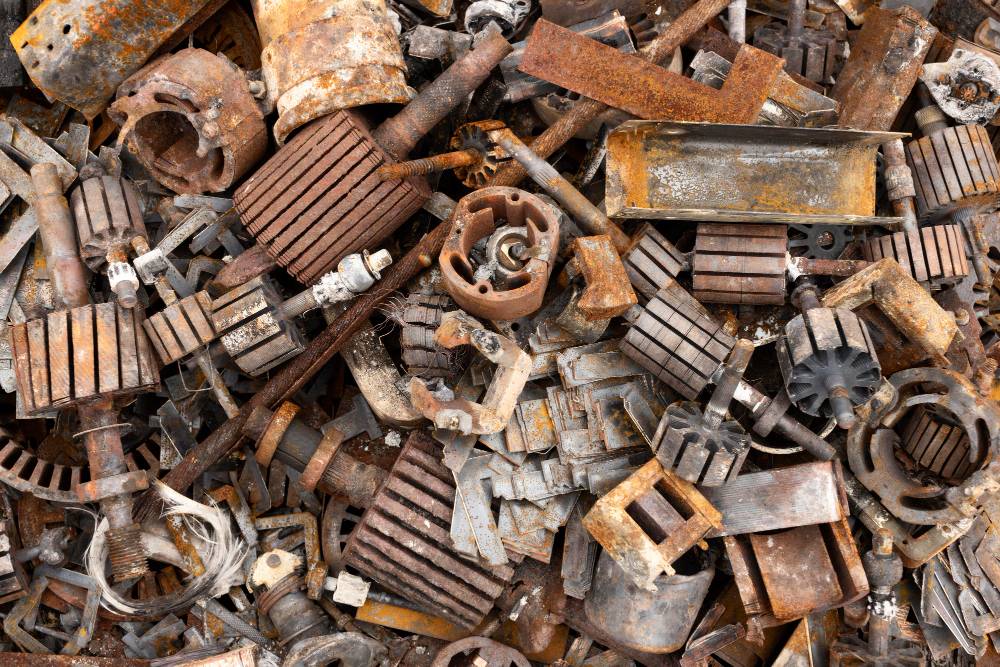

MAR 27, 2025
We all agree that recycling metals is the right thing to do. It is a fantastic practice for the environment, wallet, and community. Whether it is steel beams from a site demolition, car parts, or even aluminum cans from your kitchen, every piece of recycled metal keeps new ore from being mined. However, there’s a challenge most people face when trying to sort and identify different types of metals for recycling.
Today, RCM Recycling looks at the top common metals and how to identify them for scrap metal recycling.
Steel
Steel is one of the most recycled metals in the world. It’s strong, magnetic, and has a silver-gray color. To test if something is steel, get a magnet—if it sticks, you’ve got steel. You’ll find it in everything from appliances to old car parts.
Cast iron
Heavier and more brittle than steel, cast iron is another ferrous metal that attracts magnets. This metal finds use in old bathtubs, pipes, and cookware. If you drop a piece, it might break instead of bending. That’s a quick way to tell cast iron apart from other metals.
Aluminum
Aluminum is lightweight, non-magnetic, and doesn’t rust. It’s commonly used in soda cans, window frames, and bicycle parts. A simple test? Try scratching it with a coin—aluminum is soft and will show marks easily.
Bronze
Bronze has a reddish-brown or golden hue and is used in statues, medals, and musical instruments. Unlike steel, it won’t attract a magnet. If you see a greenish patina on an older item, it’s probably bronze.
Brass
Brass has a bright gold or yellowish appearance and is commonly found in plumbing fixtures, door handles, and decorative pieces. It’s softer than bronze and gives off a ringing sound when tapped. Not sure if it’s brass? Try scratching it—brass tends to reveal a bright yellow surface underneath.
Copper
Easily recognizable by its reddish-brown color, copper is one of the most valuable scrap metals. The common sources of copper metal include electrical wiring, pipes, and roofing materials. Over time, it develops a greenish patina, like what you see on old copper rooftops.
Tin
Tin is lightweight, silvery, and non-magnetic. It’s used in coatings, food cans, and soldering materials. Pure tin is soft enough to be bent by hand, and when you do, it makes a distinctive squeaky sound.
Zinc
Zinc is a dull, bluish-gray metal that resists corrosion. If used in coatings, it may appear spangled with a crystalline pattern. Zinc is commonly found in roofing materials, batteries, and galvanized steel coatings. If you scratch it, the surface will turn bright and shiny before quickly dulling again.
Silver
Silver is a precious metal that’s bright, shiny, and highly conductive. This metal finds widespread use in jewelry, coins, and electronics. If you rub it with a cloth and see black tarnish appear, you likely have real silver. Just be sure to check for hallmarks or stamps before assuming it’s pure.
Lead
Heavy, soft, and non-magnetic, lead is easy to recognize. It’s usually found in old pipes, batteries, and roofing materials. One key giveaway is its weight—lead is much denser than most other metals.
When it comes time to recycle, choose the scrap metal buyers at RCM Recycling. We are a top-rated scrap metal company that accepts a wide range of ferrous and nonferrous materials. Our recycling process, right from pickup to final processing, is efficient and hassle-free. Reach out today and get great prices for your scrap metals.